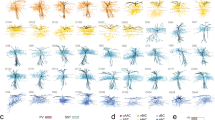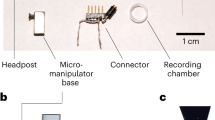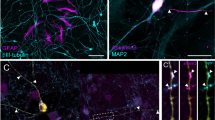Abstract
Sparse, single-cell labeling approaches enable high-resolution, high signal-to-noise recordings from subcellular compartments and intracellular organelles and allow precise manipulations of individual cells and local circuits while minimizing complex changes associated with global network manipulations. However, thus far, only a limited number of approaches have been developed to label single cells with unique combinations of genetically encoded indicators, target deep cortical structures or sustainably use the same chronic preparation for weeks. Here we developed a method to deliver plasmids selectively to single pyramidal neurons in the mouse dorsal hippocampus using two-photon visually guided in vivo single-cell electroporation to address these limitations. This method allows long-term plasmid expression in a controlled number of individual pyramidal neurons, facilitating subcellular resolution imaging, intracellular organelle tracking, monosynaptic input mapping, plasticity induction and targeted whole-cell patch-clamp recordings.
Key points
-
The delivery of plasmids selectively to single pyramidal neurons in the mouse dorsal hippocampus via two-photon visually guided in vivo single-cell electroporation.
-
This method allows long-term plasmid expression in a controlled number of individual pyramidal neurons, facilitating subcellular resolution imaging, intracellular organelle tracking, monosynaptic input mapping, plasticity induction and targeted whole-cell patch-clamp recordings for up to 2 months.
This is a preview of subscription content, access via your institution
Access options
Access Nature and 54 other Nature Portfolio journals
Get Nature+, our best-value online-access subscription
$32.99 / 30 days
cancel any time
Subscribe to this journal
Receive 12 print issues and online access
$259.00 per year
only $21.58 per issue
Buy this article
- Purchase on SpringerLink
- Instant access to full article PDF
Prices may be subject to local taxes which are calculated during checkout






Similar content being viewed by others
Data availability
Further information and requests for resources and reagents should be directed to the lead contact Attila Losonczy (al2856@columbia.edu). All unique resources generated in this study are available from the lead contact with a completed Materials Transfer Agreement.
The authors declare that the main data discussed in this protocol are available in the supporting primary research papers (https://doi.org/10.1016/j.neuron.2021.12.003; https://doi.org/10.1126/science.abm1670; https://doi.org/10.1038/s41586-021-04169-9; https://doi.org/10.1101/2023.10.04.560848; https://doi.org/10.1038/s41467-024-50546-z; https://doi.org/10.1101/2024.02.26.582144; https://doi.org/10.1038/s41467-024-46463-w). The raw datasets are available for research purposes from the corresponding authors upon reasonable request.
References
Haas, K., Sin, W. C., Javaherian, A., Li, Z. & Cline, H. T. Single-cell electroporation for gene transfer in vivo. Neuron 29, 583–591 (2001).
Margrie, T. W. et al. Targeted whole-cell recordings in the mammalian brain in vivo. Neuron 39, 911–918 (2003).
Kitamura, K., Judkewitz, B., Kano, M., Denk, W. & Häusser, M. Targeted patch-clamp recordings and single-cell electroporation of unlabeled neurons in vivo. Nat. Methods 5, 61–67 (2008).
Judkewitz, B., Rizzi, M., Kitamura, K. & Häusser, M. Targeted single-cell electroporation of mammalian neurons in vivo. Nat. Protoc. 4, 862–869 (2009).
Wertz, A. et al. Presynaptic networks. Single-cell-initiated monosynaptic tracing reveals layer-specific cortical network modules. Science 349, 70–74 (2015).
Rolotti, S. V. et al. Local feedback inhibition tightly controls rapid formation of hippocampal place fields. Neuron 110, 783–794.e6 (2022).
O’Hare, J. K. et al. Compartment-specific tuning of dendritic feature selectivity by intracellular Ca2+ release. Science 375, eabm1670 (2022).
Geiller, T. et al. Local circuit amplification of spatial selectivity in the hippocampus. Nature 601, 105–109 (2022).
Gonzalez, K. C., Negrean, A., Liao, Z., Polleux, F. & Losonczy, A. Synaptic basis of behavioral timescale plasticity. Preprint at bioRxiv https://doi.org/10.1101/2023.10.04.560848 (2023).
Liao, Z. et al. Functional architecture of intracellular oscillations in hippocampal dendrites. Nat. Commun. 15, 6295 (2024).
O’Hare, J. K., Wang, J., Shala, M. D., Polleux, F. & Losonczy, A. Variable recruitment of distal tuft dendrites shapes new hippocampal place fields. Preprint at bioRxiv https://doi.org/10.1101/2024.02.26.582144 (2024).
Virga, D. M. et al. Activity-dependent compartmentalization of dendritic mitochondria morphology through local regulation of fusion-fission balance in neurons in vivo. Nat. Commun. 15, 2142 (2024).
dal Maschio, M. et al. High-performance and site-directed in utero electroporation by a triple-electrode probe. Nat. Commun. 3, 960 (2012).
Blockus, H. et al. Synaptogenic activity of the axon guidance molecule Robo2 underlies hippocampal circuit function. Cell Rep. 37, 109828 (2021).
Ouzounov, D. G. et al. In vivo three-photon imaging of activity of GCaMP6-labeled neurons deep in intact mouse brain. Nat. Methods 14, 388–390 (2017).
Weisenburger, S. et al. Volumetric Ca2+ imaging in the mouse brain using hybrid multiplexed sculpted light microscopy. Cell 177, 1050–1066.e14 (2019).
Noguchi, A., Huszár, R., Morikawa, S., Buzsáki, G. & Ikegaya, Y. Inhibition allocates spikes during hippocampal ripples. Nat. Commun. 13, 1280 (2022).
Dombeck, D. A., Harvey, C. D., Tian, L., Looger, L. L. & Tank, D. W. Functional imaging of hippocampal place cells at cellular resolution during virtual navigation. Nat. Neurosci. 13, 1433–1440 (2010).
Kaifosh, P., Lovett-Barron, M., Turi, G. F., Reardon, T. R. & Losonczy, A. Septo-hippocampal GABAergic signaling across multiple modalities in awake mice. Nat. Neurosci. 16, 1182–1184 (2013).
Noguchi, A., Ikegaya, Y. & Matsumoto, N. In vivo whole-cell patch-clamp methods: recent technical progress and future perspectives. Sensors 21, 1448 (2021).
Acknowledgements
A.L. was supported by National Institute of Mental Health (NIMH) grants R01MH124047 and R01MH124867, National Institute of Neurological Disorders and Stroke (NINDS) grants R01NS121106, U01NS115530, R01NS133381 and R01NS131728, and National Institute on Aging grant RF1AG080818. F.P. was supported by NINDS grant R35NS127232 and the Nomis Foundation. K.C.G. was supported by NINDS grant 5T32NS064928-13. A. Noguchi was supported by Overseas Research Fellowships (JSPS) and an HFSP postdoctoral fellowship. J.O.H. was supported by NIMH grant F32MH118716 and NINDS grant K99NS127815.
Author information
Authors and Affiliations
Contributions
Conceptualization: A. Negrean, T.G. and A.L. Methodology: A. Negrean, T.G., J.O.H., K.C.G. and A. Noguchi. Investigation: A. Negrean, T.G., J.O.H. and K.C.G., A. Noguchi, M.S. and S.T. Visualization: K.C.G., A. Noguchi and G.Z. Data curation: K.C.G., A. Noguchi, G.Z. and H.C.Y. Funding acquisition: A.L. Resources: A.L. Project administration: A.L. and F.P Supervision: A.L. and F.P. Writing—original draft: K.C.G., A. Noguchi, G.Z., H.C.Y. and A.L. Writing—review and editing: all authors.
Corresponding author
Ethics declarations
Competing interests
The authors declare no competing interests.
Peer review
Peer review information
Nature Protocols thanks Kurt Haas and Takafumi Inoue for their contribution to the peer review of this work.
Additional information
Publisher’s note Springer Nature remains neutral with regard to jurisdictional claims in published maps and institutional affiliations.
Key references
Rolotti, S. V. et al. Neuron 110, 783–794.e6 (2022): https://doi.org/10.1016/j.neuron.2021.12.003
O’Hare, J. K. et al. Science 375, eabm1670 2022: https://doi.org/10.1126/science.abm1670
Geiller, T. et al. Nature 601, 105–109 (2022): https://doi.org/10.1038/s41586-021-04169-9
Liao, Z. et al. Nat. Commun. 15, 6295 (2024): https://doi.org/10.1038/s41467-024-50546-z
Supplementary information
Supplementary Information
Supplementary Fig. 1
Rights and permissions
Springer Nature or its licensor (e.g. a society or other partner) holds exclusive rights to this article under a publishing agreement with the author(s) or other rightsholder(s); author self-archiving of the accepted manuscript version of this article is solely governed by the terms of such publishing agreement and applicable law.
About this article
Cite this article
Gonzalez, K.C., Noguchi, A., Zakka, G. et al. Visually guided in vivo single-cell electroporation for monitoring and manipulating mammalian hippocampal neurons. Nat Protoc 20, 1468–1484 (2025). https://doi.org/10.1038/s41596-024-01099-4
Received:
Accepted:
Published:
Issue date:
DOI: https://doi.org/10.1038/s41596-024-01099-4



